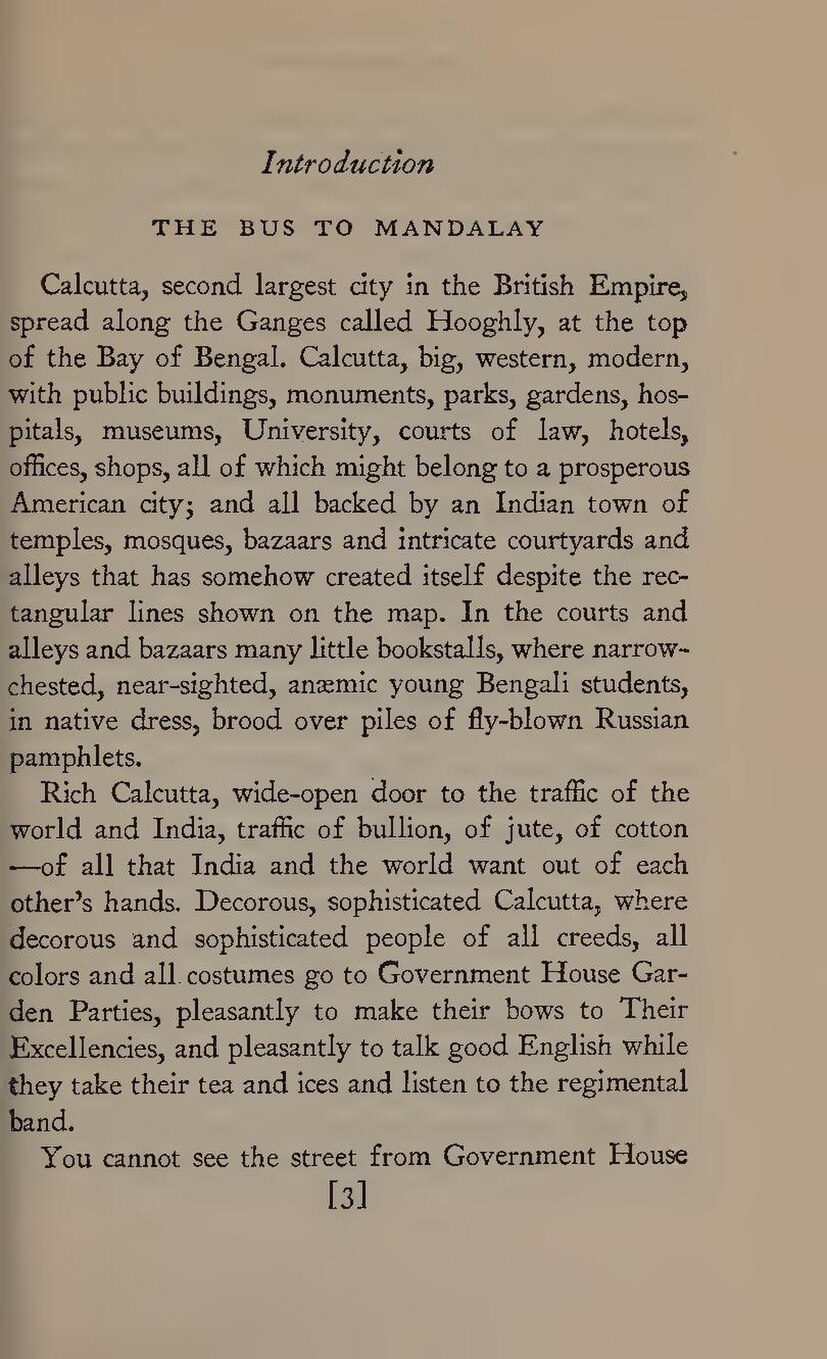Introduction
THE BUS TO MANDALAY
Calcutta, second largest city in the British Empire, spread along the Ganges called Hooghly, at the top of the Bay of Bengal. Calcutta, big, western, modern, with public buildings, monuments, parks, gardens, hospitals, museums, University, courts of law, hotels, offices, shops, all of which might belong to a prosperous American city; and all backed by an Indian town of temples, mosques, bazaars and intricate courtyards and alleys that has somehow created itself despite the rectangular lines shown on the map. In the courts and alleys and bazaars many little bookstalls, where narrow-chested, near-sighted, anæmic young Bengali students, in native dress, brood over piles of fly-blown Russian pamphlets.
Rich Calcutta, wide-open door to the traffic of the world and India, traffic of bullion, of jute, of cotton—of all that India and the world want out of each other’s hands. Decorous, sophisticated Calcutta, where decorous and sophisticated people of all creeds, all colors and all costumes go to Government House Garden Parties, pleasantly to make their bows to Their Excellencies, and pleasantly to talk good English while they take their tea and ices and listen to the regimental band.
You cannot see the street from Government House
